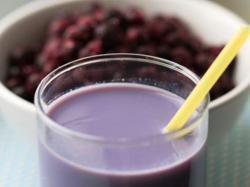Science Says Flavored Milk Is Good For Kids, Unlike Soda
March 30, 2010 | 3 min to read

PHILADELPHIA — According to Philadelphia Health Commissioner Donald F.
Schwarz, half of the city’s children are overweight or obese, and soft-drink
consumption is rising while milk consumption is falling. As proposed, the tax on
sugar-sweetened beverages applies not only to nutrient-poor soft drinks and iced
teas but also to a nutrient-rich beverage, flavored milk. With seven out of 10
pre-teen and teen boys and nine out of 10 pre-teen and teen girls failing to
meet their daily calcium requirements, adding a tax to flavored milk places a
fiscal and physical burden on Philadelphia children already in a calcium crisis.
Flavored milk contributes less than 2 percent of the total added sugar to the
average teen’s diet and less than 3.5 percent in children ages 6 to 12. Sodas
and fruit drinks account for 50 percent or more, delivering much less, if any,
nutrition in the process.
“The fact is, children are not drinking enough milk as it is,” said Patricia
Kennedy, MS, RD, vice president of nutrition communications for Mid-Atlantic
Dairy Association. “Failing to get adequate calcium in childhood puts kids at
increased risk for stress fractures and bone breaks now and osteoporosis later
in life. Flavored milk is a way to help children get adequate servings of
nutrient-rich dairy every day.”
The American Academy of Pediatrics suggested that low-fat or fat-free flavored
milks with modest amounts of added sweeteners are generally recommended to help
optimize bone health and calcium intakes of children and adolescents. Another
study in the Journal of the American Dietetic Association found that flavored
milk drinkers consume more milk than exclusively unflavored milk drinkers.
Scientific research supports the benefits of nutrient-rich flavored milk as part
of a healthy diet.
- Milk drinkers, in general, consume more calcium, phosphorus, magnesium,
potassium and vitamin A than non-milk drinkers.(1) - Flavored milk drinkers do not have higher total fat or calorie intakes
than non-milk drinkers.(2) - Children who drink flavored and unflavored milk do not have a higher body
mass index (BMI) thank those who do not drink milk.(2) - Flavored milk drinkers have lower intakes of soft drinks compared to those
who do not drink flavored milk.(3)
Milk is a nutrition powerhouse — both flavored and plain milk contain nine
essential nutrients including calcium, potassium, phosphorus, protein, vitamins
A, D and B12, riboflavin and niacin. Studies show that flavored milk can help
close the nutrition gap because children prefer it and will drink more milk when
it’s flavored.
The 2005 Dietary Guidelines for Americans and leading health professional
organizations including the American Academy of Pediatrics, the American
Dietetic Association, and the American Heart Association support the inclusion
of low-fat or fat-free flavored milk in children’s and adolescents’ diets. For
more information about the nutrition benefits of flavored milk, visit
http://dairyspot.com/schools/flavoredmilk/flavoredmilk.html.
Mid-Atlantic Dairy Association and Pennsylvania Dairy Promotion Program,
affiliates of National Dairy Council, provide nutrition education programs and
services in the Mid-Atlantic region. For more information, visit
www.dairyspot.com.
Established in 1915, National Dairy Council provides science-based nutrition
information to, and in collaboration with, a variety of stakeholders committed
to fostering a healthier society, including health professionals, educators,
school nutrition directors, academia, industry, consumers and media. For more
information, visit NationalDairyCouncil.org.
(1)Frary CD, Johnson RK, Wang MQ. Children and adolescents’ choices of foods and
beverages high in added sugars are associated with intakes of key nutrients and
food groups. J Adolesc Health 2004; 34(1):56-63.
(2)Murphy MM, Douglas JS, Johnson RD, Spence LA. Drinking flavored or plain milk
is positively associated with nutrient intake and is not associated with adverse
effects on weight status in U.S. children and adolescents. J Am Diet Asoc 2008;
108:631-639.
(3)Johnson RK, Frary C, Wang MQ. The nutritional consequences of flavored milk
consumption by school-aged children and adolescents in the United States. J Am
Diet Assoc. 2002; 102(6):853-856
Available Topic Expert(s): For information on the listed expert(s), click
appropriate link.
Althea Zanecosky, MS, RD, LDN
https://profnet.prnewswire.com/Subscriber/ExpertProfile.aspx?ei=43098
Source:
Mid-Atlantic Dairy Association
